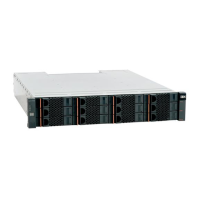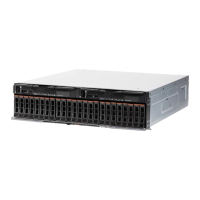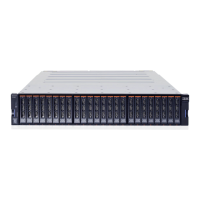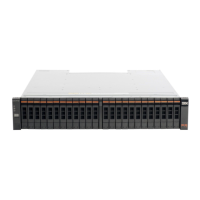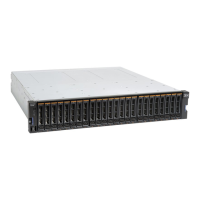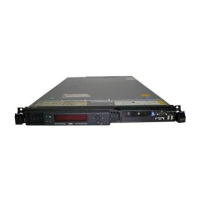408 IBM Flex System V7000 Storage Node Introduction and Implementation Guide
Figure 9-60 Write on volume in a Metro Mirror relationship
The Metro Mirror function supports copy operations between volumes that are separated by
distances up to 300 km. For disaster recovery purposes, Metro Mirror provides the simplest
way to maintain an identical copy on both the primary and secondary volumes. However, as
with all synchronous copies over remote distances, there can be a performance impact to
host applications. This performance impact is related to the distance between primary and
secondary volumes and, depending on application requirements, its use might be limited
based on the distance between sites.
Global Mirror
Global Mirror provides an asynchronous copy, which means that the secondary volume is not
an exact match of the primary volume at every point in time. The Global Mirror function
provides the same function as Metro Mirror Remote Copy without requiring the hosts to wait
for the full round-trip delay of the long-distance link; however, some delay can be seen on the
hosts in congested or overloaded environments. Make sure that you closely monitor and
understand your workload.
In asynchronous Remote Copy, which Global Mirror provides, write operations are completed
on the primary site and the write acknowledgement is sent to the host before it is received at
the secondary site. An update of this write operation is sent to the secondary site at a later
stage, which provides the capability to perform Remote Copy over distances exceeding the
limitations of synchronous Remote Copy.
The distance of Global Mirror replication is limited primarily by the latency of the WAN Link
provided. Global Mirror has a requirement of 80 ms round-trip-time for data sent to the remote
location. The propagation delay is roughly 8.2 µs per mile or 5 µs per kilometer for Fibre
Channel connections. Each device in the path adds addition delay of about 25 µs. Devices
that use software (such as some compression devices) add much more time. The time added
by software-assisted devices is highly variable and should be measured directly. Be sure to
include these times when planning your Global Mirror design.
You should also measure application performance based on the expected delays before
Global Mirror is fully implemented. IBM Flex System V7000 Storage Node provides you with
an advanced feature of Global Mirror that permits you to test performance implications before
deploying Global Mirror and obtaining a long-distance link.
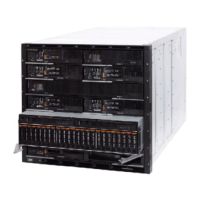
